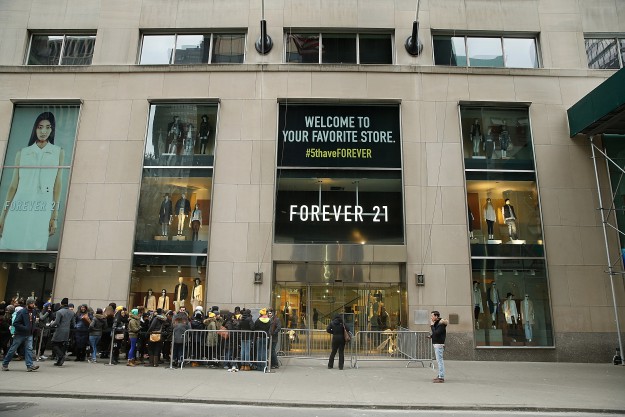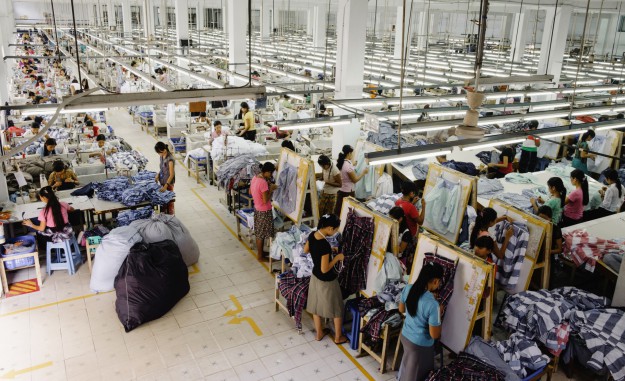Op-Ed: The True Cost of the Commodification of Fashion
updated the 3 February 2016 à 07:47Driven by commodification and market thinking, keeping up with our demand for the new has a dark side.

In a world where commodification and market thinking have pervaded almost all aspects of our lives – from babies on sale for surrogacy to wildlife conservation – fashion is no exception. In fact, many regard fashion as the embodiment of commercialism and consumerism, an industry that creates an artificial demand for goods to drive sales and profit.
Profit-focused market thinking has fundamentally changed the fashion industry’s production cycle. Its ever-increasing speed is charging ahead and leaving destruction in its wake, crushing creativity, polluting and exhausting the environment, and even causing a fatal impact on human labour and society.
Fast fashion brands are extremely profitable because of their quick turnaround time – these brands churn out collections weeks after designs are shown on the runway (Zara’s turnaround time from a designer’s sketch to the store shelf is a mere two weeks).
This breakneck speed of fashion is no longer confined to fast fashion, as high-end designers feel the pressure to compete. Suzy Menkes explains in her piece for T Magazine, “With the traditional six-month lead time on the delivery of international show content, designer collections can be outpaced by the so-called fast fashion chains. H&M, Topshop and Zara, or even Target and J. Crew, would have their versions for sale before the designer looks hit the stores. So the pace of high fashion had to become equally frenetic.”
Is Creativity Compromised?
This has made creativity a challenge, as more shows mean shorter lead time for the design and creative process. Aside from the traditional twice-yearly seasonal collections (Spring/ Summer and Fall/ Winter), big luxury houses have two haute couture shows, another for menswear, and two more for resort (or cruise) and pre-fall.
In 2013, Alber Elbaz said that he used to be able to “go on exploratory trips and hang out in downtown galleries, trawling inspiration for his shows.” Last year, he announced he would be leaving Lanvin after 14 years, and used his two-minute speech at an awards ceremony to talk about how the industry’s relentless pace is crushing creativity. He was quoted saying: “I said, ‘I need more time.’ And I think everybody in fashion these days needs just a little more time.”
Designers may be creative geniuses, but with an industry based on commerce and consumption, our demand for the new is insatiable and hence the need to constantly generate profitable new ideas.
Suzy Menkes writes, “If we accept that the pace of fashion today was part of the problem behind the decline of John Galliano, the demise of Alexander McQueen and the cause of other well-known rehab cleanups, nonstop shows seem a high price to pay for the endless “newness” demanded of fashion now.”
Kien M. Lee, the Founder and Managing Director of SENATUS, an Asian luxury and lifestyle digital magazine, thinks that fast fashion has simply made the playing field bigger. He writes in a blog post, “someone who is a TOM FORD customer isn’t going to being hijacked by a H&M/TopShop/Zara copy.”
He argues, “If anything, affordable fashion has made it such that MORE people can dress more fashionably. If more luxurious fashion labels cannot make their own case with workmanship, materials and brand DNA, and thus justify a higher price tag, in light of a larger, more fashionable consumer base, then perhaps it is their own fault they aren’t doing well.”
Indeed, fast fashion has made it such that more people can dress fashionably. Luxury executives have capitalised on this too, by democratising luxury and making it accessible — creating the ‘accessible luxury’ market.
However, to examine the impact of fast fashion on the wider industry only through its impact on luxury fashion sales – looking at this through a commercial, profit-driven lens – is reductionist. It glosses over how the production of fashion is inextricably bound up with creativity, ethics, human labour, and the environment.

What’s the human cost?
In addition to designers, fashion’s production machine is powered by an estimated 40 million garment factory workers – many of whom work in the developing world with exploitative wages and in deplorable working conditions – are also affected by the endless newness now demanded of fashion.
Labour issues and safety disasters such as factory fires are not uncommon in the garment industry. The Triangle Shirtwaist Factory fire in New York City that killed 146 garment workers in 1911 is a notable example, but the more recent Rana Plaza collapse which killed 1,134 in Bangladesh in 2013 was on a far deadlier scale.
While the horror of such incidents have led to certain legislative action improving safety standards, we still seem to be repeating history. Our systems of production remain just as abusive and exploitative as they were during the industrial revolution and the Gilded Age. Except now, our demand for products is even more voracious, and corporations are able to outsource catastrophe to places where workers are most vulnerable.
A piece in the Huffington Post titled ‘Myth of the Ethical Shopper’ explains the new fast-fashion era production process: “We buy more clothes now, move through trends faster. In the olden days – the early 90s – brands produced two to four fashion cycles per year, big orders coordinated by season, planned months in advance. These days, there’s no such thing as cycles, only products. If a shirt is selling well, Wal-Mart orders its suppliers to make more.”
Rather than manage a giant network of factories themselves, most brands have outsourced this coordination to megasuppliers. However, it is impossibly difficult to regulate the labour conditions of megasuppliers. After receiving orders from megasuppliers, factories compete to deliver large orders at fast turnovers, and often further subcontract out when demand is too high.
One example of this vicious cycle is the Tazreen fire, after which NGO campaigns focused on how Wal-Mart was responsible for 60 percent of the clothing being produced there. However, Wal-Mart never placed an order with Tarzeen Fashion Factory. In fact, over a year before the fire, Wal-Mart inspected the factory and found that it was unsafe. By the time of the fire, it had banned its suppliers from using it.
So how did Wal-Mart’s products end up at Tazreen?
According to the Huffington Post, “Wal-Mart hired a megasupplier called Success Apparel to fill an order for shorts. Success hired another company, Simco, to carry out the work. Simco—without telling Success, much less Wal-Mart—sub-contracted 7 percent of the order to Tazreen’s parent company, the Tuba Group, which then assigned it to Tazreen. Two other sub- (or sub-sub-sub-) contractors also placed Wal-Mart orders at Tazreen, also without telling the company.”
This illustrates the extreme difficulty of regulating labour conditions amidst the “newness” demanded of fashion now. We live in a time where almost everything can be commodified – bought and sold.
Lastly, in the book Out of Sight, Erik Loomis – a historian of both the labor and environmental movements – argues that corporations often warn of higher production costs resulting from environmental regulations. Corporations then relocate jobs to developing countries where they are unrestricted by environmental regulations. Fashion is the second dirtiest industry in the world, next to big oil. Fashion manufacturers are polluting our rivers, poisoning our bodies, depleting resources and accumulating massive waste.
The commodification of fashion is negatively affecting creativity, the environment, and even drives the exploitation of garment factory workers by denying them a living wage and subjecting them to inhumane working conditions on an even more alarming scale than before – sometimes even at the cost of their lives.
These issues should compel us to think about the moral limits of markets. Is the price we’re willing to pay for our insatiable demand for new products worth it?
After all, the destruction of both human life and our environment is irreversible.
Shane Tan
Photos: Getty Images




